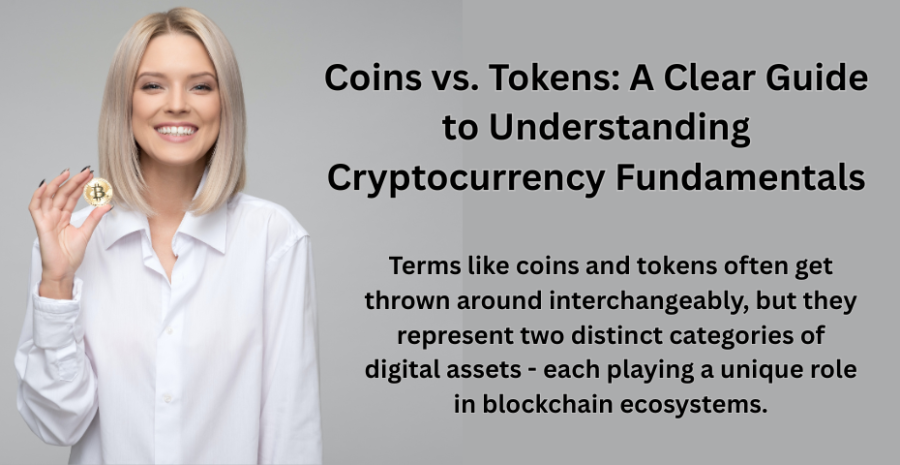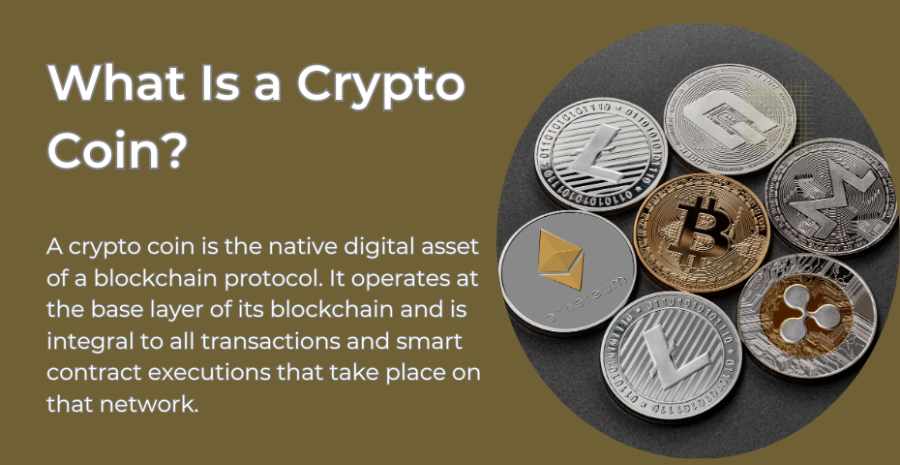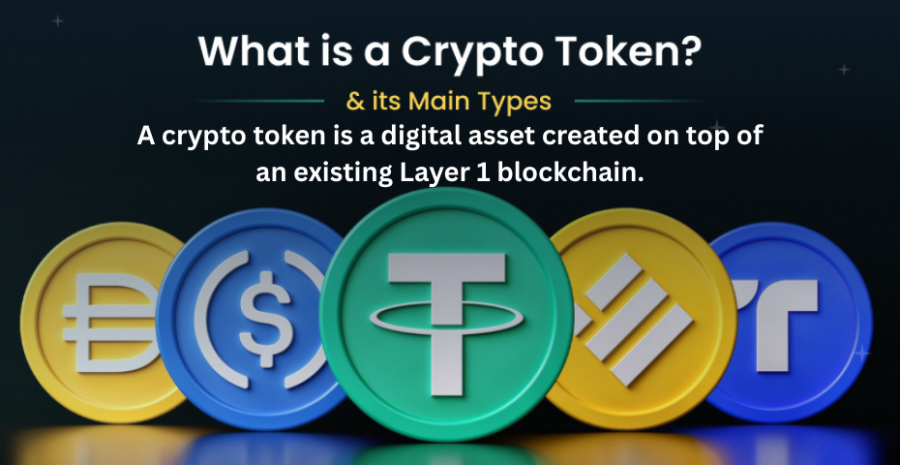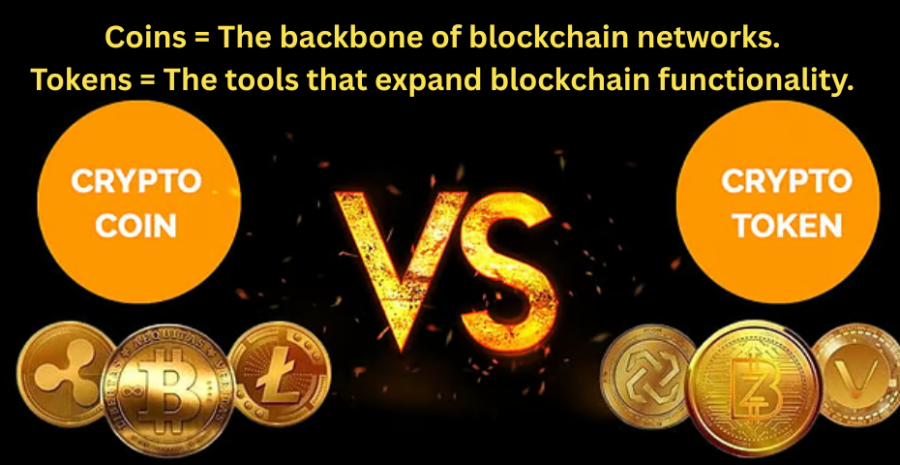

The cryptocurrency market can feel like an entirely new language for beginners. Terms like coins and tokens often get thrown around interchangeably, but they represent two distinct categories of digital assets - each playing a unique role in blockchain ecosystems.
Whether you’re an investor, developer, or simply curious about the future of finance, understanding the difference between coins and tokens is essential to making informed decisions in the crypto space.
In this guide, we’ll break down coins and tokens, explain how they work, and explore their practical uses - equipping you with the knowledge you need to navigate the digital asset landscape with confidence.

A crypto coin is the native digital asset of a blockchain protocol. It operates at the base layer of its blockchain and is integral to all transactions and smart contract executions that take place on that network.
Coins are often referred to as Layer 1 cryptocurrencies, and their names usually match their blockchain’s name. For example:
Bitcoin (BTC) belongs to the Bitcoin blockchain
Ethereum (ETH) belongs to the Ethereum blockchain
These coins act as the foundation for decentralized applications (dApps) and tokens built on top of the network.
How Coins Work:
Medium of exchange – Facilitate peer-to-peer transfers without intermediaries.
Store of value – Provide a hedge against inflation or act as a digital commodity.
Validator rewards – Distributed through mining (Proof-of-Work) or staking (Proof-of-Stake) to secure the network.
Examples of Crypto Coins:
Bitcoin (BTC), Ethereum (ETH), Cardano (ADA), Solana (SOL), Polkadot (DOT), Ripple (XRP), Litecoin (LTC), Tron (TRX), Tezos (XTZ), EOS (EOS), HiveCoin (HVC)

A crypto token is a digital asset created on top of an existing Layer 1 blockchain. Tokens are not native to the blockchain itself but are instead built within decentralized applications, games, DeFi protocols, and other blockchain-based services.
While Ethereum is the most widely used blockchain for creating tokens, others like Solana and Binance Smart Chain also host token ecosystems.
Tokens typically serve specialized purposes - such as granting governance rights, enabling in-game purchases, or representing ownership in a project.
How Tokens Work:
Created using blockchain-specific token standards (e.g., ERC-20 for fungible tokens on Ethereum).
Often released in fixed supply batches via ICOs, IEOs, IDOs, or airdrops.
Operate using smart contracts rather than blockchain-native protocols.
Examples of Crypto Tokens:
Chainlink (LINK), Maker (MKR), Tether (USDT), Uniswap (UNI), Aave (AAVE), Decentraland (MANA), Dai (DAI).

| Feature | Coins | Tokens |
|---|---|---|
| Blockchain Layer | Native to Layer 1 blockchains | Built on top of Layer 1 blockchains |
| Function | Medium of exchange, store of value, rewards | Utility, governance, in-app transactions |
| Creation | Via blockchain consensus mechanisms | Via smart contracts |
| Examples | BTC, ETH, ADA | LINK, UNI, MANA |
In short:
Coins = The backbone of blockchain networks.
Tokens = The tools that expand blockchain functionality.
Understanding whether a project issues a coin or a token is more than technical trivia- it impacts everything from security and transaction speed to investment risk and utility potential.
Coins tend to be more foundational and secure, while tokens often offer higher-risk, higher-reward opportunities in niche markets like DeFi, NFTs, and metaverse ecosystems.
.png)
Markethive, a next-generation blockchain-powered market network, is a prime example of how tokens can be leveraged for real utility. Its HiveCoin operates within the platform’s decentralized ecosystem, enabling transactions, incentivizing community engagement, and supporting entrepreneurs in a secure, peer-to-peer environment.
Unlike many speculative tokens, HiveCoin is integrated into a functioning blockchain-based marketplace - demonstrating how tokens can create lasting value when paired with a robust business model.
Coins and tokens both power the cryptocurrency universe, but their roles are distinct:
Coins form the infrastructure of blockchain ecosystems.
Tokens extend that infrastructure into specialized applications and services.
By mastering these fundamentals, you’ll be better prepared to evaluate projects, diversify your portfolio, and participate meaningfully in blockchain innovation.
And with ecosystems like Markethive and its HiveCoin leading the way in utility-driven blockchain adoption, the line between digital assets and real-world value is becoming clearer every day.
👉 Join Markethive today Build, grow, earn. For free.
Your time to thrive is now. One step at a time.
.png)
About: Andries vanTonder (66)
Over 46 years selfemployed
He is a Serial Entrepreneur, an Enthusiastic supporter of Blockchain Technology and a Cryptocurrency Investor
Find me: Markethive Profile Page | My Twitter Account | My Instagram Acount | and my Facebook Profile.
